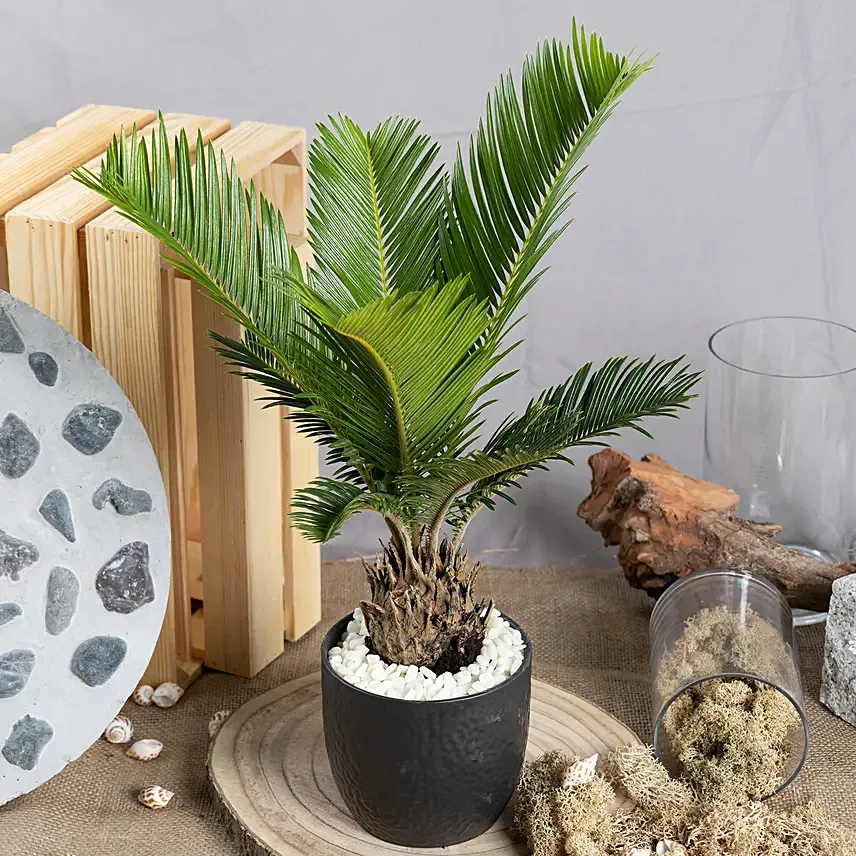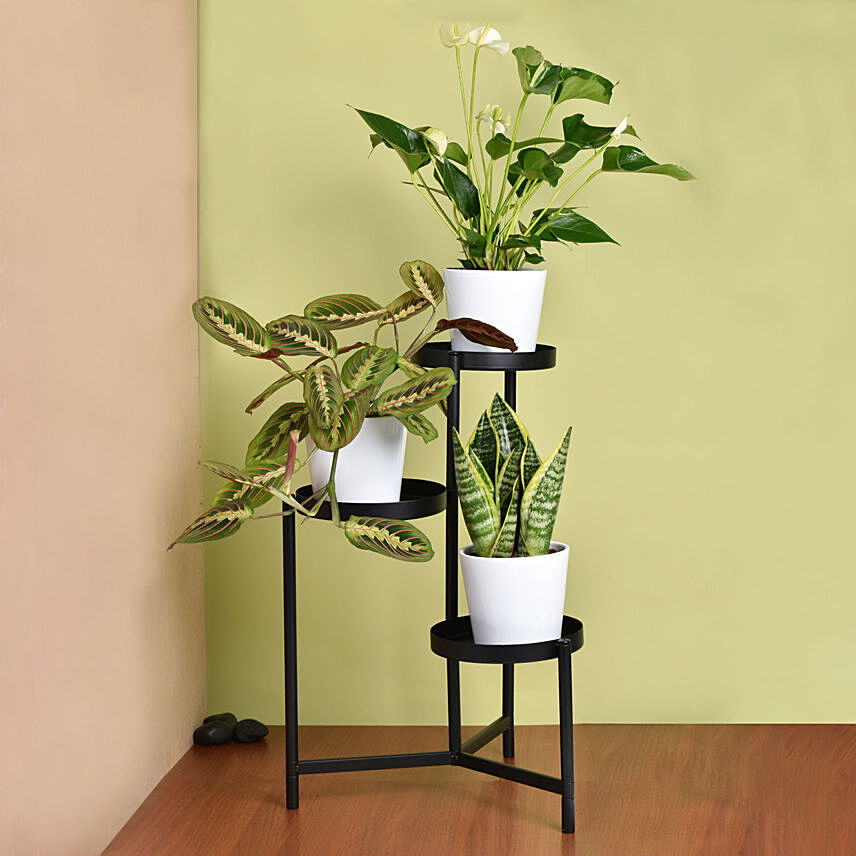Let’s face it: gardening can be tricky when you’re juggling work, family, and the endless to-do list of modern life. But that doesn’t mean you have to give up your dream of a green oasis. Whether you live in a Dubai high-rise or a cosy villa in Abu Dhabi, self-watering planters are changing the game for plant lovers across the UAE.
With the growing interest in indoor and outdoor gardening, more people are bringing nature into their homes. But time? It’s a luxury. That’s where self-watering planters come in. These clever containers are like personal assistants for your plants, quietly doing the hard work while you enjoy the beauty.
So, what makes self-watering planters the busy gardener’s best friend? Let’s dig in.
What Are Self-Watering Planters?
At first glance, a self-watering planter looks like any other pot. But inside, it’s got a clever design that makes plant care effortless.
These pots come with three key components:
- Water reservoir: This stores water at the bottom of the planter.
- Wicking system: A mechanism (usually a wick or soil column) that pulls water up to the roots when needed.
- Overflow hole: Prevents overfilling and protects your plants from soggy roots.
Unlike traditional pots that rely on top-down watering, self-watering planters hydrate from the bottom up. The plant takes what it needs when it needs it. No guesswork, overwatering, or dried-out soil.

Source: Pinterest
Benefits of Using Self-Watering Planters
1. Convenience and Time-Saving
Watering every day? Not anymore. Self-watering pots for indoor plants let you go days, or even weeks, without checking on them. Perfect for travellers, busy professionals, or parents who’ve got a thousand things going on.
Got a trip to Ras Al Khaimah planned? Your plants won’t even notice you’re gone.
2. Consistent Moisture for Plants
Plants are a lot like us; they prefer routine. These planters provide steady moisture, preventing common issues like wilting, droopy leaves, or dry soil. Say goodbye to the overwatering-underwatering rollercoaster.
Whether it’s a leafy indoor plant or a delicate jade plant, they get just the right amount of water every time.
3. Water Conservation
In a region like the UAE, water is precious. These planters help you use less of it. Because water is delivered efficiently and slowly, there’s minimal evaporation or waste.
It’s a small change that makes a big impact, especially if you’re growing multiple plants or managing a balcony garden.
4. Healthier Plants and Roots
Excess watering can lead to root rot and nutrient leaching. Self-watering systems avoid that by letting the plant call the shots. Roots stay oxygenated, healthy, and happy.
Even finicky species like cactus plants do well in this setup, with the right adjustments, of course.

Source: FNP.ae
Best Plants for Self-Watering Planters
Not every plant enjoys constant moisture, but plenty do! These thrive with a steady water supply:
Herbs
- Basil: Loves sun and consistent hydration. Place it near your kitchen window or on a sunny balcony. Great for garnishing salads and pastas.
- Mint: Thrives in moist soil and spreads quickly. A self-watering system keeps it happy without waterlogging its roots.
Vegetables
- Tomatoes: They need deep, regular watering. Self-watering pots keep the soil evenly moist, preventing splitting and promoting juicy fruit.
- Lettuce: Lettuce loves cool, damp soil. This system avoids wilted leaves, giving you crisp, home-grown greens.
Houseplants
- Peace Lily: Low-maintenance and air-purifying. It loves moist soil but hates soggy roots, perfect match.
- Pothos: Thrives in varied conditions. In a self-watering pot, it grows fuller and needs minimal attention.
- Spider Plant: Great for beginners. These pots keep its soil just right, encouraging baby plantlets to pop up.
Want to build a lush green corner? These picks are ideal for self watering pots for indoor plants.

Source: FNP.ae
How to Use and Maintain Self-Watering Planters?
You don’t need a green thumb; just follow these steps:
Setup
- Fill the reservoir from the base using the inlet.
- Add soil and plant. Use light, well-draining potting mix (not garden soil).
- Check the indicator regularly to track water levels.
Maintenance Tips
- Clean monthly to prevent algae or salt buildup.
- Keep the overflow hole clear, especially for outdoor pots.
- Refill when low; don’t wait for drooping leaves.
Things to Consider Before Buying
- Plant Size: Larger plants like a rubber tree need a bigger reservoir. Smaller ones like mint or your favourite aloe vera plant can thrive in compact pots.
- Location: Is it for your balcony or living room? Some are UV-resistant for outdoor use, while others are sleek and stylish for indoor settings.
- Material: Plastic is lightweight and affordable. Ceramic is chic. Fibreglass is ultra-durable, great for withstanding UAE heat.
- Design: Go modern, rustic, or minimal; match your decor while giving your plant a functional home.
- Budget: From budget-friendly to luxe designer pots, options abound. Even a modest investment can boost your plant’s lifespan and save water.

Source: FNP.ae
DIY vs. Store-Bought Options
Can’t find the perfect self-watering planter? Make your own! All you need are some basic materials, a little time, and creativity.
Pros of DIY
- Affordable: Use recycled containers and materials you already have at home. No fancy tools required.
- Custom Sizes: Tailor the size to match your plant perfectly, whether it’s a tiny succulent or a large cactus plant.
- Eco-Friendly: Reusing bottles and jars helps reduce waste and supports sustainable living.
Cons of DIY
- Durability: Homemade systems may not last as long as commercial planters and could need frequent repairs.
- Extra Monitoring: DIY systems often lack water level indicators, so you’ll need to check water levels manually.
- Less Aesthetic: Unless you get creative with paint and materials, homemade pots might not match your home decor.
Store-bought planters, on the other hand, are plug-and-play. Many come with sleek designs, clear indicators, and materials suited for the UAE’s weather, perfect if you prefer something reliable and stylish.

Source: FNP.ae
Conclusion
If you love plants but don’t have the time, self-watering planters are the answer. They keep your plants hydrated, healthy, and happy without constant attention.
Whether you’re just starting your plant journey or adding to your growing jungle, these pots make it easier than ever. Try one out. You might just find yourself growing more herbs, flowers, or even your own mini salad garden.
So, the next time you’re eyeing that gorgeous peace lily plant or dreaming of fresh basil in your kitchen, remember: self watering plants aren’t just a trend. They’re a lifestyle upgrade.






